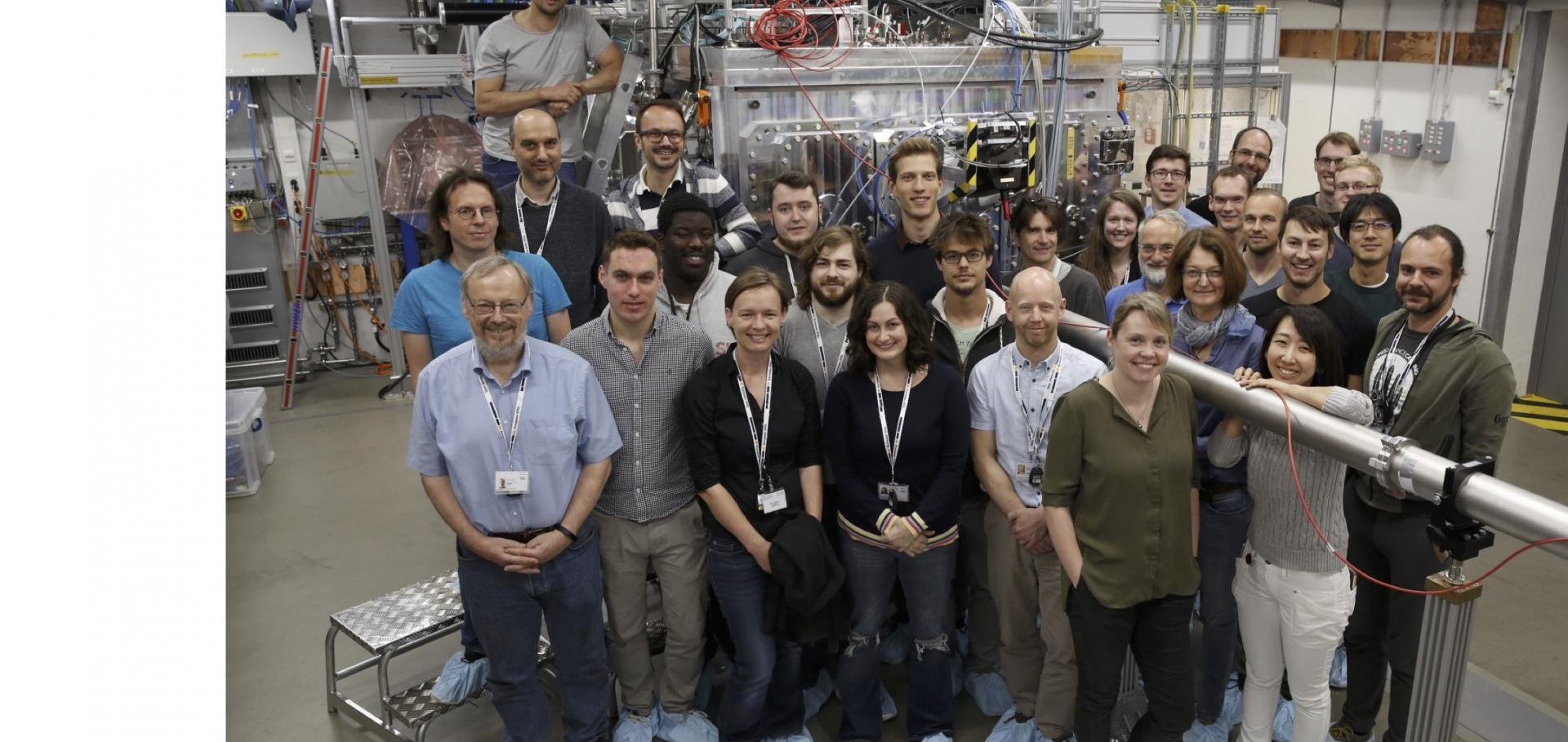Investigating off-Hugoniot states using multi-layer ring-up targets
Scientific Reports Springer Nature 10:1 (2020) 13172
Abstract:
Laser compression has long been used as a method to study solids at high pressure. This is commonly achieved by sandwiching a sample between two diamond anvils and using a ramped laser pulse to slowly compress the sample, while keeping it cool enough to stay below the melt curve. We demonstrate a different approach, using a multilayer ‘ring-up’ target whereby laser-ablation pressure compresses Pb up to 150 GPa while keeping it solid, over two times as high in pressure than where it would shock melt on the Hugoniot. We find that the efficiency of this approach compares favourably with the commonly used diamond sandwich technique and could be important for new facilities located at XFELs and synchrotrons which often have higher repetition rate, lower energy lasers which limits the achievable pressures that can be reached.Recovery of a high-pressure phase formed under laser-driven compression
Physical Review B American Physical Society 102:2 (2020) 24101
Abstract:
The recovery of metastable structures formed at high pressure has been a long-standing goal in the field of condensed matter physics. While laser-driven compression has been used as a method to generate novel structures at high pressure, to date no high-pressure phases have been quenched to ambient conditions. Here we demonstrate, using in situ x-ray diffraction and recovery methods, the successful quench of a high-pressure phase which was formed under laser-driven shock compression. We show that tailoring the pressure release path from a shock-compressed state to eliminate sample spall, and therefore excess heating, increases the recovery yield of the high-pressure ω phase of zirconium from 0% to 48%. Our results have important implications for the quenchability of novel phases of matter demonstrated to occur at extreme pressures using nanosecond laser-driven compression.Time-resolved XUV opacity measurements of warm-dense aluminium
Physical Review Letters American Physical Society 124 (2020) 225002
Abstract:
The free-free opacity in plasmas is fundamental to our understanding of energy transport in stellar interiors and for inertial confinement fusion research. However, theoretical predictions in the challenging dense plasma regime are conflicting and there is a dearth of accurate experimental data to allow for direct model validation. Here we present time-resolved transmission measurements in solid-density Al heated by an XUV free-electron laser. We use a novel functional optimization approach to extract the temperature-dependent absorption coefficient directly from an oversampled pool of single-shot measurements, and find a pronounced enhancement of the opacity as the plasma is heated to temperatures of order of the Fermi energy. Plasma heating and opacity enhancement are observed on ultrafast timescales, within the duration of the femtosecond XUV pulse. We attribute further rises in the opacity on ps timescales to melt and the formation of warm dense matter.Time-Resolved XUV Opacity Measurements of Warm Dense Aluminum.
Physical review letters 124:22 (2020) ARTN 225002
Abstract:
The free-free opacity in plasmas is fundamental to our understanding of energy transport in stellar interiors and for inertial confinement fusion research. However, theoretical predictions in the challenging dense plasma regime are conflicting and there is a dearth of accurate experimental data to allow for direct model validation. Here we present time-resolved transmission measurements in solid-density Al heated by an XUV free-electron laser. We use a novel functional optimization approach to extract the temperature-dependent absorption coefficient directly from an oversampled pool of single-shot measurements, and find a pronounced enhancement of the opacity as the plasma is heated to temperatures of order of the Fermi energy. Plasma heating and opacity enhancement are observed on ultrafast timescales, within the duration of the femtosecond XUV pulse. We attribute further rises in the opacity on ps timescales to melt and the formation of warm dense matter.X-ray diffraction at the National Ignition Facility
Review of Scientific Instruments AIP Publishing 91:4 (2020) 043902


